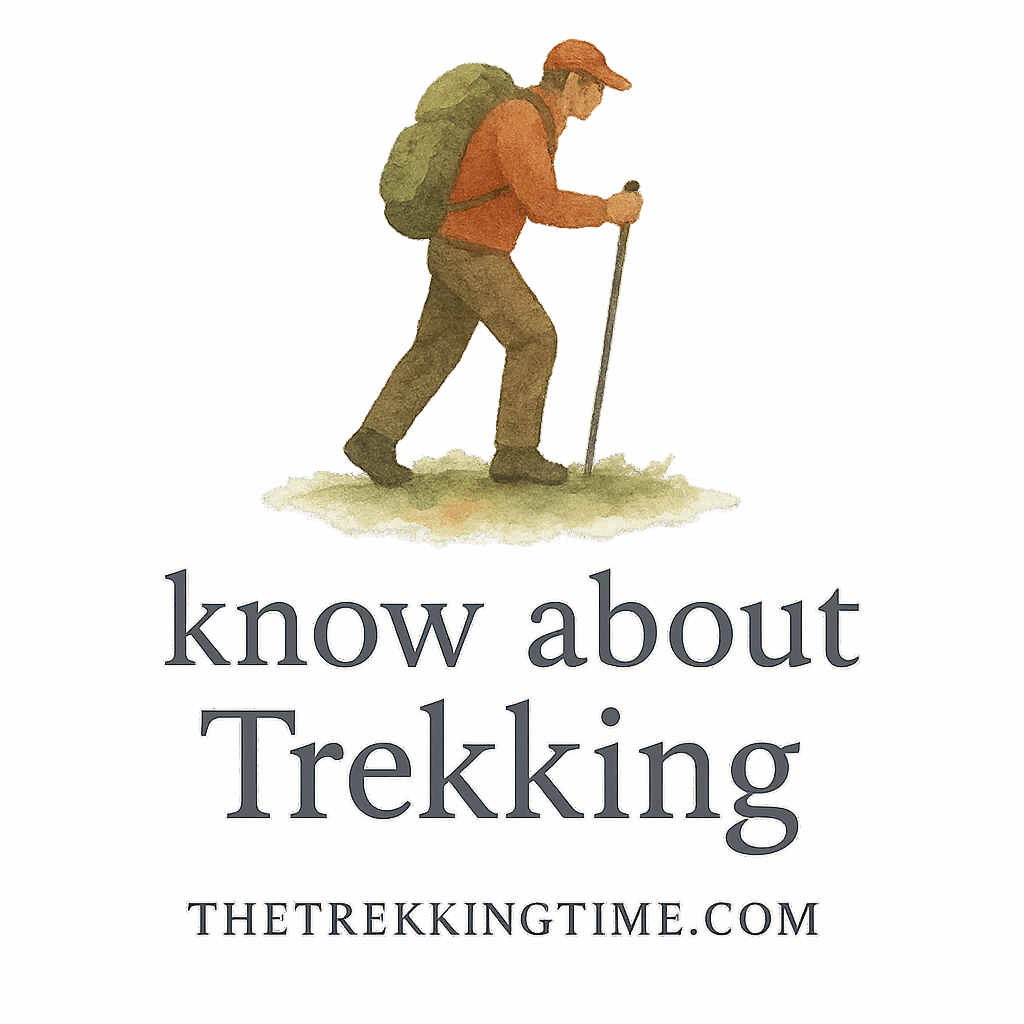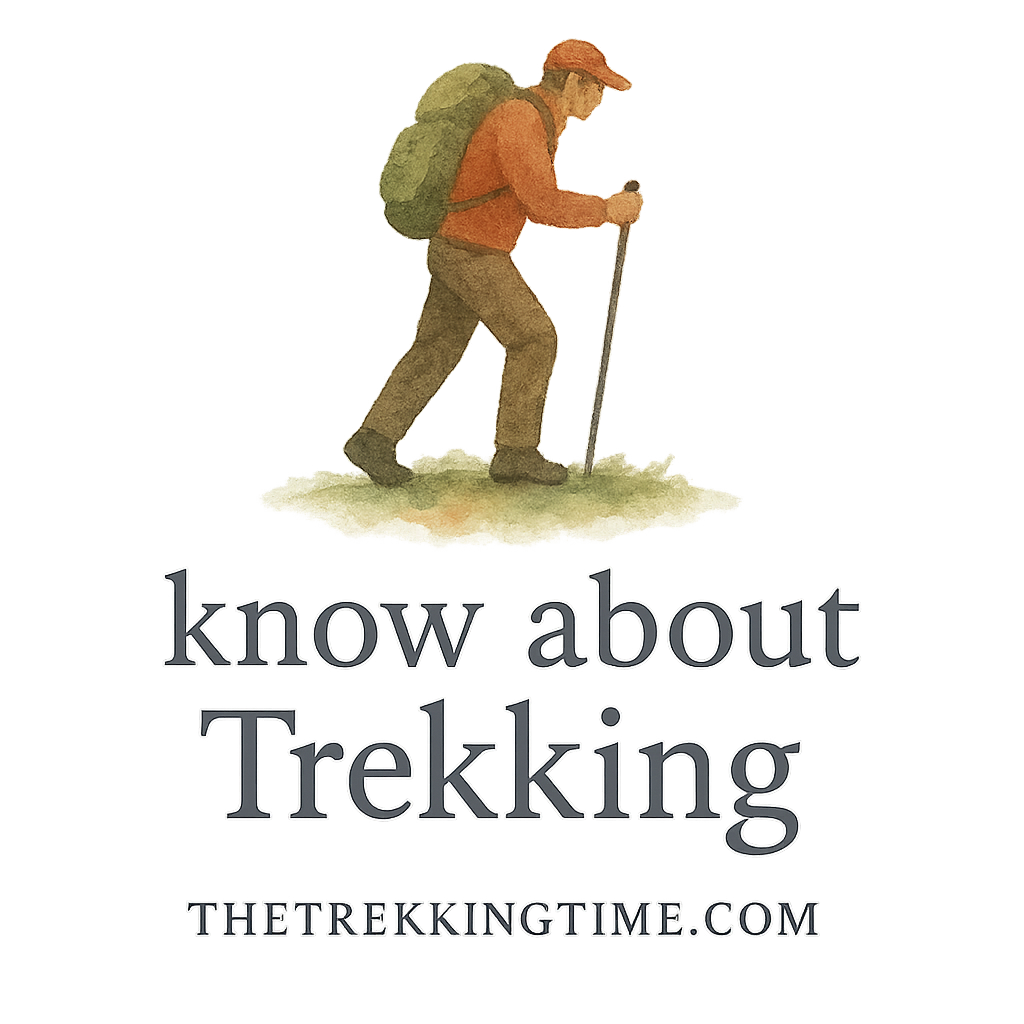Trekking is all about embracing the great outdoors, conquering challenges, and reconnecting with nature. But nothing ruins the thrill faster than realizing… you’re lost. Scary, right? The good news is—you don’t have to be! With the right navigation tools and a bit of know-how, you can explore with confidence.
So, let’s talk about the 7 navigation tools for trekking without getting lost, and how you can pair them up for a safer, smarter adventure.
Why Navigation is Crucial When Trekking
When you’re far from civilization and deep in nature, even a minor mistake in direction can have major consequences.
Real Dangers of Losing Your Way
Wandering off the trail can mean:
- Getting injured in unfamiliar terrain
- Missing water sources or campsites
- Delaying rescue if you’re in trouble
That’s why every trekker—whether beginner or seasoned—needs to understand and use navigation tools effectively. Visit our guide on trekking safety tips for a deeper dive.
Trekking Without GPS: A Risk You Shouldn’t Take
Modern tools like GPS and mobile apps help eliminate guesswork. But even these can fail without proper backup. That’s why layered navigation is the name of the game.
Key Considerations When Choosing Navigation Tools
Terrain and Environment
Jungle? Desert? Mountain range? Choose tools based on your environment. A compass might work wonders in a forest, while a GPS is a lifesaver in the open Himalayas.
Length and Difficulty of the Route
Long treks on remote trails require more advanced tools and backup options. Read more at Trekking Destinations to plan accordingly.
Personal Experience Level
New to trekking? Start simple but safe. Check out Trekking Basics for beginner-friendly guides.
7 Navigation Tools for Trekking Without Getting Lost
Let’s break down the tools that keep you on the right path.
1. Paper Maps
Why Traditional Maps Still Matter
Don’t underestimate old-school maps! They never run out of battery, don’t crash, and work anywhere. Maps show terrain details and allow for strategic planning.
Best Practices for Using Paper Maps
- Waterproof your maps
- Mark your route in advance
- Always carry a backup copy
Pair your map with a compass for accuracy—this is Trekking 101!
2. Compass
How to Use a Compass Effectively
A compass points you north. When used with a map, you can identify landmarks, find direction, and plot a course even when visibility is low.
Pairing a Compass with a Map
Don’t just carry a compass—know how to read it! Use a trekking gear packing checklist to include this vital tool.
3. GPS Devices
Pros and Cons of Dedicated GPS Units
Pros:
- Extremely accurate
- Works in low visibility
- Stores maps and tracks
Cons:
- Requires batteries
- May lose signal under dense canopy
Check out the trekking performance section for reviews of the best trekking GPS gear.
Recommended Models for Trekkers
Look for brands like Garmin or Suunto with trekking-specific functions.

4. Smartphone Apps
Top Trekking Apps for Navigation
Apps like Gaia GPS, AllTrails, and Komoot offer offline maps and route planning.
Offline Accessibility and Battery Life
Always download maps in advance and carry a power bank. Learn more on trekking fitness prep to stay ready for anything.
5. Trail Markers and Signage
Reading and Understanding Trail Signs
Look for blazes, cairns, and signboards. These guide you visually and are especially useful in well-maintained parks.
Regional Variations in Markers
Different countries and trails use different systems. Brush up on trail rules before you go.
6. Altimeters and Barometers
Tracking Elevation for Location Awareness
These measure altitude changes. Useful when ascending mountains or navigating valleys. They also help confirm your location on topographic maps.
Best Use Scenarios for Altimeters
Try them during Himalayan treks, where elevation is critical.
7. Satellite Communicators
Staying Connected in Remote Areas
Devices like Garmin InReach let you send texts and GPS coordinates via satellite—even when there’s no cell service.
Emergency Use and Navigation Integration
Great for SOS alerts and sharing live locations with loved ones. See how they boost outdoor safety.
Combining Tools for Maximum Safety
Layering Navigation Methods
Don’t rely on just one tool. Use a GPS, but carry a map and compass. Apps are handy—but only when paired with real knowledge.
Creating Redundancy in Your System
Redundancy = safety. Have at least 2–3 reliable tools with you. Learn about smart packing in our gear section.
Pro Tips to Stay Oriented on the Trail
Checkpoints and Route Planning
Break your trek into segments. Mark notable landmarks and time checks.
Trekking in Groups vs. Solo Navigation
Group trekking helps avoid errors. But if you go solo, sharpen your navigation skills. Don’t forget to check out hiking etiquette and solo trekking safety tips.
Link Your Trekking Toolkit With Your Skills
Practice Makes Perfect
Use your tools on short hikes before a big trip. Familiarity saves lives!
Learn Before You Go
Take a navigation course or watch online tutorials. Explore our resources on trekking habits and mental preparedness.
Conclusion
Navigation isn’t just about tools—it’s about awareness, preparation, and respect for nature. Whether you’re exploring misty forests or vast highlands, having the right navigation tools can be the difference between adventure and disaster. Equip yourself with at least two tools, know how to use them, and always plan ahead.
Stay safe, stay smart, and most importantly—never stop exploring.
Explore more helpful guides at The Trekking Time!
FAQs
1. What’s the best GPS app for trekking without signal?
Gaia GPS and AllTrails are excellent offline options. Always download maps in advance!
2. Can I trek with just a smartphone app?
It’s risky. Always have a backup like a paper map or compass—especially in remote zones.
3. What’s the most beginner-friendly navigation tool?
Trail markers and smartphone apps are easy to use, but practice is key.
4. How do I use a compass with a map?
Align the compass with map north, set your bearing, and follow the direction of travel arrow.
5. Are GPS devices better than smartphones?
Yes, especially in extreme environments. They’re more durable, accurate, and weather-resistant.
6. What if my navigation tool fails mid-trek?
Have backups! Combine a digital device with analog tools like a compass and map.
7. Where can I learn more about safe trekking practices?
Head over to Trekking Basics and Trekking Safety Tips to stay fully prepared.


